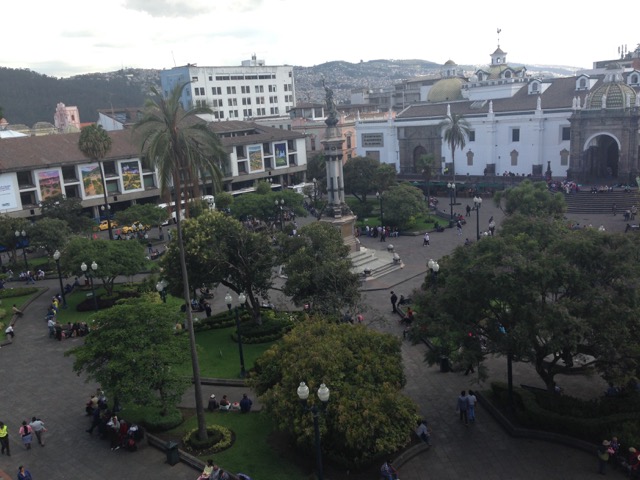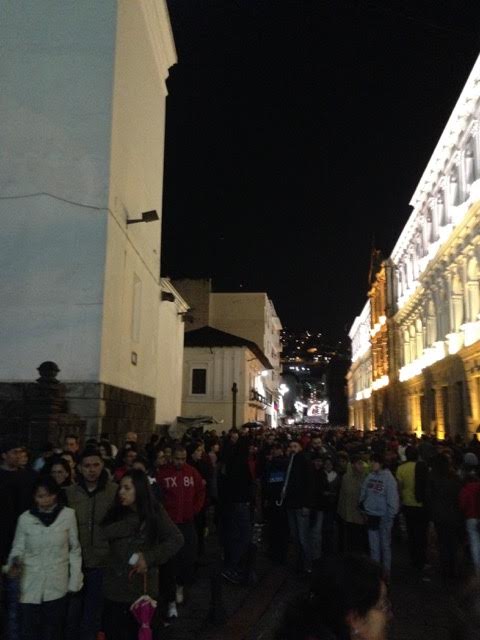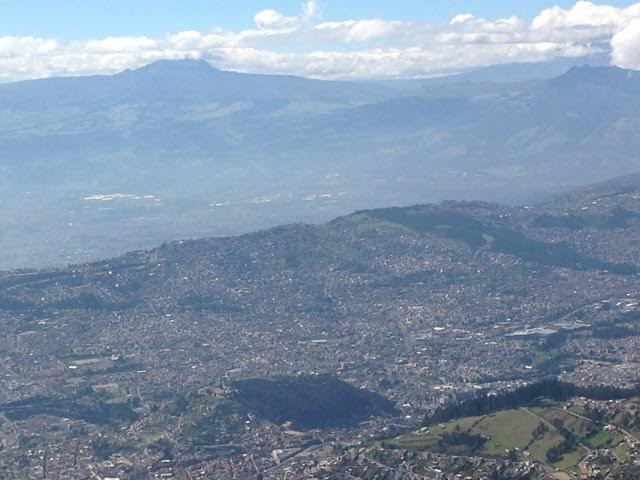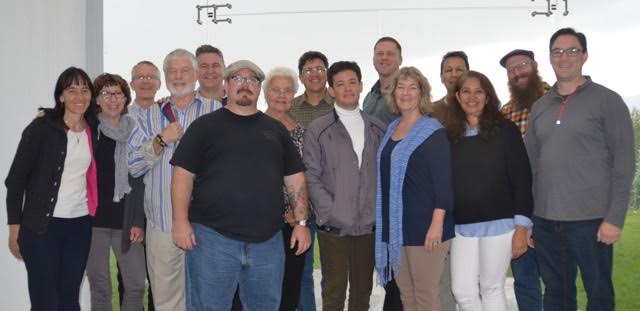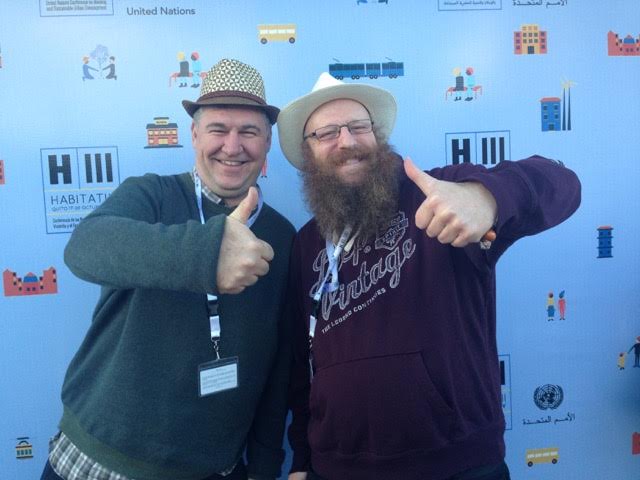Quito, Habitat 3 and the New Urban Agenda
Monday, 7 November 2016
| Andre van Eymeren
Introduction
As the plane touched down in Quito, the Ecuadorian capital, the adventure of an unfamiliar culture and new people awaited. I was greeted by Rick, a missionary to Latin America, and Bryan, a church planter, and soon we were on our way to a bible college about 45 minutes away.
I was in Ecuador for two conferences. The first was the Gospel and the Future of Cities, a joint initiative of the World Evangelical Alliance, Micah Global and the Lausanne Movement. The second was the UN’s Habitat 3, a conference focused on the ratification and implementation of the New Urban Agenda, a document outlining the development of cities for the next 20 years.
People dribbled into the college over the next couple of days. Guests arriving in daylight were treated to the magnificent view of a snow-covered volcano in the distance, stark white in contrast to the clear blue sky. By afternoon the volcano would disappear, the sky covered in cloud, with heavy drops providing a reprieve from the glaring morning heat.
The Gospel and the Future of Cities
The natural beauty of Quito was an incredible environment for talking about cities and the gospel. I had the privilege of being one of the first speakers and exploring some of the definitions around city, shalom and discipleship. For most of the church, there has been a lack of engagement around cities, despite them being the primary organising mechanism for human settlement all over the globe. As a community development practitioner, I am grateful for churches that are beginning to engage with their community. However, this can come at the cost of neglecting the broader context in which communities sit, i.e. the city. As such, it is important for us to consider how to interpret mission in the light of this broader reality. Understanding the New Urban Agenda is a helpful way to begin.
Another reason for the church ignoring the city has been the prevailing view of the city as evil, as a place of questionable morals, poverty, degradation, heartbreak, homelessness and so on. Friends of mine used to do a talk with students of theology and sociology called Murky Melbourne, Marvellous Melbourne, simply to illustrate that there are 2 sides to the city: both the hard stuff we’d rather turn away from and the opportunities and beauty that are possible when people come together. And where is God in this? Embracing both sides!
Unfortunately, often when Christians have tried to engage with the city, it has been with a narrow evangelical or personal salvation focus, which has seen well-meaning but ‘crazy’ street preachers yelling the gospel at passersby. Again well-meaning but misguided efforts by Christians have seen large donations of clothes, food and even TVs to a city’s homeless population, often entrenching a way of life and providing no ultimate avenue out of homelessness or marginalisation.
As our conversations at the conference took us further, we asked: ‘what do we, as people of faith, have to offer to the development of cities?’ We realised that God has already positioned many people of faith in key positions of influence, including urban planners, city managers, architects, community development workers, business leaders and a whole array of others. In these instances, it quite often becomes a question of discipleship, of helping people integrate their faith with their work. Churches can recognise, value, disciple and commission the people of influence in their midst.
However, this will only work if churches have a clear picture of what we have to offer into the conversation around the development of cities. At Quito we began to see that our unique contribution could be shaped around the concept of shalom. This concept encompasses the wellbeing of the individual in the context of community, and is echoed throughout the Scriptures (Jer 29:3-7, Isa 58:6-12, 65:17-25, Micah 6:6-8, Lk 4:16-20, Rev 22:1-5). Shalom is a holistic concept encompassing physical and mental health, relationships, belonging, the meeting of basic needs, purpose and celebration, and can easily be in dialogue with urban design, spatial geography, planning, housing, the creation of public space and social infrastructure - and the list goes on. It becomes a very robust argument not only for the sustainability of our human settlements but also for the very essence of what it means to flourish as a person. Whilst shalom can focus on the big picture level of social planning, it applies equally to working with local communities and neighbourhoods.
Habitat 3
By Sunday night, it was time to move into the centre of the city and prepare for the second conference, along with the 50,000 other Habitat 3 citizens. In a new city full of people and traffic, I found it both exhilarating and a little nerve wracking as I made my way to my accommodation. I was staying close to the centre, with some people from my university.
On Monday, the first official day of Habitat 3, we headed to the main venue to pass security and get registered. Once inside, the next task was to work out which of the plethora of options one wanted to experience: side events, the exhibition hall and various community projects set up around Quito.
I went to side events that explored the place of academics in the implementation of the New Urban Agenda, the role of planning in informal settlements, how to re-invent your neighbourhood, community living and building green, adequate housing as a basic human right, how to create a shared knowledge base about the city and using renewables to build community. I was even part of running a side event with people from my university on Ekistics, the science of human settlements that can be used for mapping communities.
The conference left me with a sense of optimism. So many people were committed to building great cities of inclusivity and hope for all. However, I was also a little disappointed at the lack of embrace of community development principles. There was almost a sense that, if we employ great techniques such as mini-renewable energy plants, economic revitalisation, innovative housing developments and so forth, the community will develop on its own around them. In my experience, this is rarely the case.
The New Urban Agenda
The document itself is a rather drab looking 24-page broad brushstroke agreement that was officially ratified by the world’s leaders on the last day of Habitat 3. The whole process has been rather invisible to most of the Australian public, not receiving much media attention. The official Australian delegation was quite small, raising questions about its implementation in our nation. However, in contrast to other UN processes, there was a great deal of room for engagement by academia, civil society and local government. Whilst the agenda encourages national city development policies, the implementation is very firmly with local governments and associated groups. I believe this provides the perfect entrée for the church.
The New Urban Agenda outlines a shared vision of the city for all:
…referring to the equal use and enjoyment of cities and human settlements, seeking to promote inclusivity and ensure that all inhabitants, of present and future generations, without discrimination of any kind, are able to inhabit and produce just, safe, healthy, accessible, affordable, resilient, and sustainable cities and human settlements, to foster prosperity and quality of life for all. We note the efforts of some national and local governments to enshrine this vision, referred to as right to the city, in their legislations, political declarations and charters. (The New Urban Agenda ratified in Quito, Ecuador, October 2016)
The document outlines a people-centered approach to the development of cities that rings true to the biblical narrative and to the picture of shalom. The Genesis creation account puts humanity at the centre of God’s story as image bearers with the capacity for self-giving love, creativity, beauty, justice, compassion and wisdom. We have a need for and the capacity to draw strength from stillness, purpose, belonging and community. We see these traits of God both in the divine and when humanity is at its best. When embraced, they lead to human flourishing. Whilst not expressing itself in that language, the New Urban Agenda opens the door for conversations between people of faith and others of goodwill for the shaping of cities.
For so long, we have ignored the expertise that God has put in our midst. Within any congregation, but particularly in the wider church across any city, there is a representation of nearly every profession, with each person having a contribution to make. As was the prophet’s call to the Jews in exile in Babylon, we are to work for the benefit, shalom, flourishing, prosperity of the city, for, if it is doing well, the shalom of all people and of that city will be increased. Thinking of our mission in this way reduces the unhelpful dichotomy between God’s Kingdom and this world, the spiritual and the material, and breaks down that horrible ‘us and them’ attitude that can so easily seep into our approach to the world.
The New Urban Agenda gives us the opportunity to embrace an inclusive theology that recognises the presence of God’s Kingdom in the world and allows us to partner with others who desire a similar picture of the world. The fact that there are others who desire a world like this is testament to God’s pervasive presence in the world and the spark of the divine he has placed inside each one of us. It gives us cause for celebration when we encounter a like-minded city planner, community development worker or business leader.
Conclusion
The Gospel and the Future of Cities Conference and Habitat 3 are great opportunities for us, as a church, to once again raise our eyes from our immediate, pressing obligations and engage with the bigger picture: a picture that points us to a common humanity, together with others who desire cities to become places where everyone can belong and prosper. The call is for us as people of faith to embrace the New Urban Agenda and work diligently alongside others who share its precepts for a better world.
Andre van Eymeren is a writer and researcher with a background in grassroots community development. He provides images and stories based on well-researched evidence, empowering others to strengthen their communities and to play their part in creating a better world.
Main image source: The Urban Shalom Project.
All other images: Courtesy of the author.
